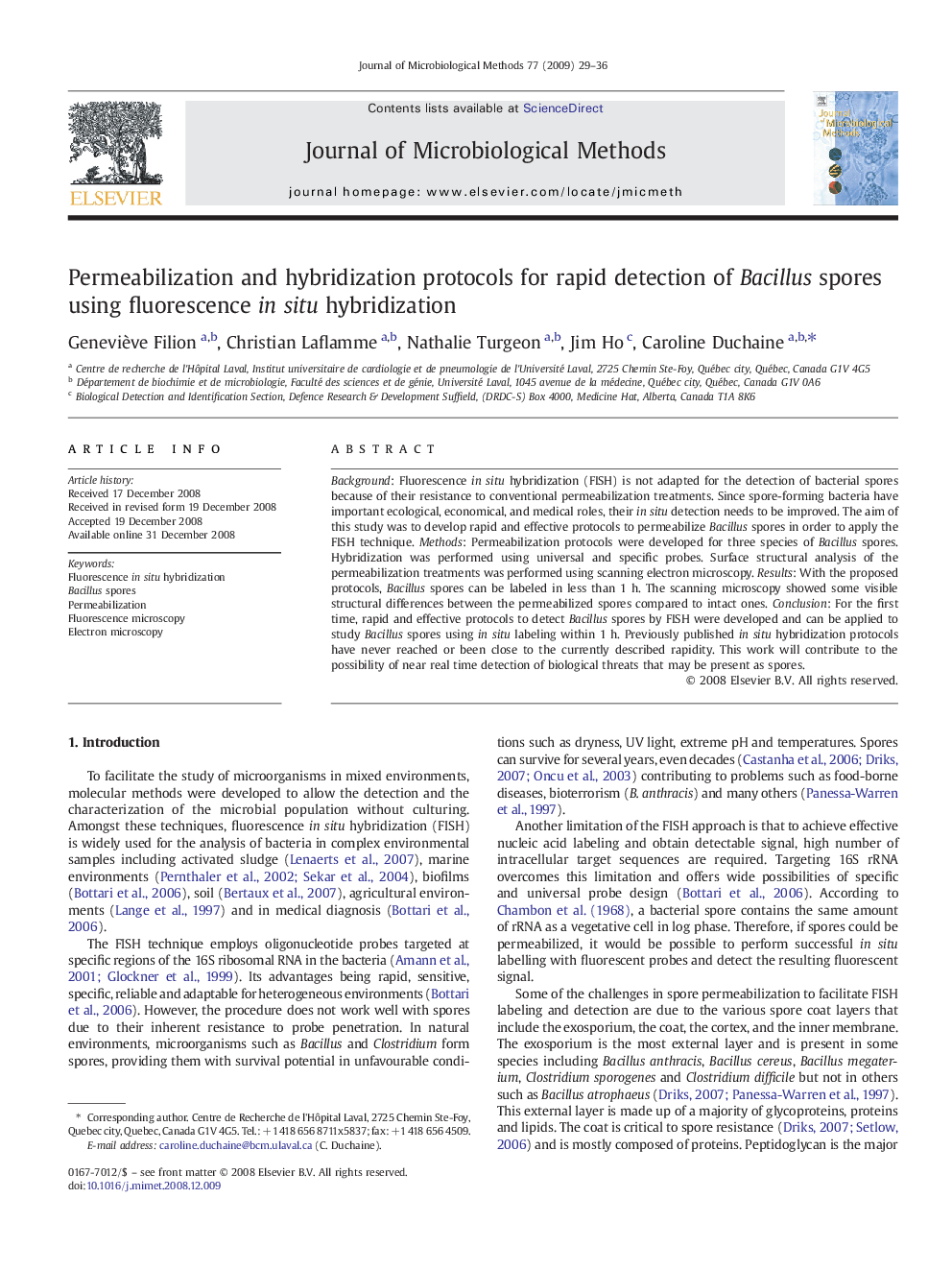| Article ID | Journal | Published Year | Pages | File Type |
|---|---|---|---|---|
| 2090854 | Journal of Microbiological Methods | 2009 | 8 Pages |
Background: Fluorescence in situ hybridization (FISH) is not adapted for the detection of bacterial spores because of their resistance to conventional permeabilization treatments. Since spore-forming bacteria have important ecological, economical, and medical roles, their in situ detection needs to be improved. The aim of this study was to develop rapid and effective protocols to permeabilize Bacillus spores in order to apply the FISH technique. Methods: Permeabilization protocols were developed for three species of Bacillus spores. Hybridization was performed using universal and specific probes. Surface structural analysis of the permeabilization treatments was performed using scanning electron microscopy. Results: With the proposed protocols, Bacillus spores can be labeled in less than 1 h. The scanning microscopy showed some visible structural differences between the permeabilized spores compared to intact ones. Conclusion: For the first time, rapid and effective protocols to detect Bacillus spores by FISH were developed and can be applied to study Bacillus spores using in situ labeling within 1 h. Previously published in situ hybridization protocols have never reached or been close to the currently described rapidity. This work will contribute to the possibility of near real time detection of biological threats that may be present as spores.
